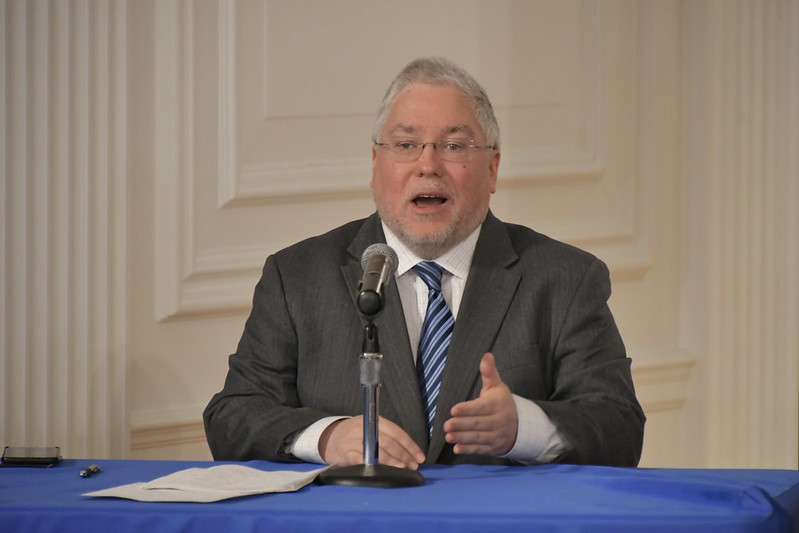West Virginia announced a $99 million settlement with an opioid drug manufacturer this week. How that money may be divided among communities and then used to alleviate the state’s addiction problems is spelled out in a 44-page document.
The “West Virginia First Memorandum of Understanding” lays out the terms for the state and the many counties and cities that may receive a portion of the settlement to push back against ongoing drug addiction issues. The agreement also applies to other proceeds from state legal actions over opioid addiction.
The state’s announced settlement with Janssen Pharmaceuticals, a Johnson & Johnson subsidiary, still must receive an official sign-off from the counties and cities involved. Then the memorandum of understanding would kick in to shape where the money goes and how it may be used.

“It’s really designed to determine the permissible use for the money,” Attorney General Patrick Morrisey said this week on MetroNews’ “Talkline.”
“I think it’s going to be the best and most comprehensive plan attacking opioids that we’ve seen in this state to date. And now we have to just fill up the bucket with a lot of the resources coming in from settlements, trials and other purposes.”
Seed money for the fund
The fund actually begins with the $10 million settlement the state reached with McKinsey and Company from Feb. 3, 2021.
Then additional money will be added from settlements and verdicts from more cases over opioid abuse.
Dividing the money
Under the terms, 24.5 percent of the funds goes to local governments. Those distributions take place through percentages spelled out in the memorandum of understanding.
A major portion, 72.5 percent, goes to a private, nonstock, nonprofit corporation described as an Opioid Foundation.
Finally, the state receives 3 percent to be held in escrow for expenses related to opioid litigation. If the 3 percent is not spent by Dec. 31, 2026, then 1 percent goes to local governments and 2 percent goes to the Opioid Foundation.
Local percentages
A long list of communities and percentages fills in some details of the local allocations.
The alphabetical list starts with Addison Town in Webster County receiving 0.0191 percent and goes on to Wyoming County receiving 4.0024 percent.
Kanawha County, the largest in the state, receives 3.6016 percent. Charleston, the state capital, is allocated 6.7218 percent.
How the Opioid Foundation works
The new foundation is meant to promote cooperation and more bang-for-the-buck.
It is to include a governing board with expertise and regional representation. The governing board includes five members from different regions appointed by the governor and approved by the state Senate. Six more members are to be named by regions of local governments, which are drawn on a map in the document.
An executive director is to be appointed by the Attorney General after consultation with the board.
Board members are also charged with appointing a panel with expertise in substance abuse treatment, mental health, law enforcement, pharmacology, finance and healthcare policy and management. The expert panel is supposed to provide guidance on strategies for abating the opioid epidemic in communities around the state.
How the money is supposed to be used
Local governments are supposed to pass resolutions with explanations about using the funds.
Up to half the money for local governments may be used as reimbursement for funds already spent on fighting the effects of opioid abuse, including law enforcement and regional jail fees.
The memorandum spells out several core abatement strategies.
Those include, for example, support for using Naloxone to reverse opioid overdoses. Another possible strategy is increasing the availability of medication-assisted treatment. An example is promoting school-based and youth-based programs to discourage or prevent misuse.
More possibilities might be expanding screening, intervention and treatment referrals to uninsured pregnant women or treatment and recovery services for postpartum women. Expanding treatment for neonatal abstinence syndrome is another recommendation.
More strategies are aimed at goals such as supporting efforts to prevent over-prescribing and supporting efforts to discourage or prevent misuse of opioids.

Charleston’s City Council has authorized getting on board with the framework.
“I do believe it is detailed, workable and helpful,” said Joseph Jenkins, the chairman of Charleston Council’s finance committee.
“The detail is focused on the allowable uses. And it’s my understanding that the uses are very similar to the uses approved for the large Perdue settlement that was vetted over 24 months by many entities. Therefore, I personally did not have any issue with the allowable uses.”

